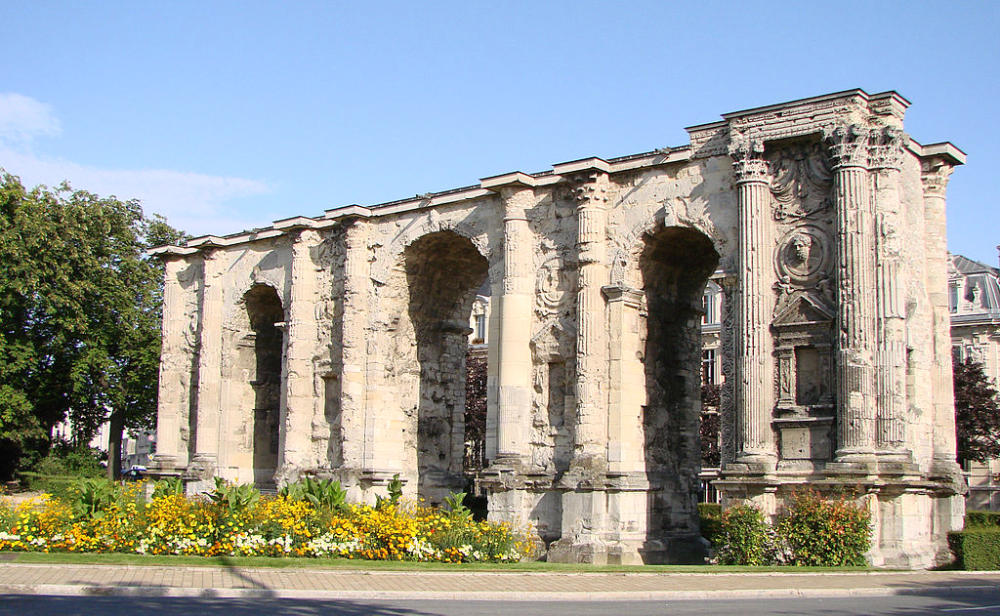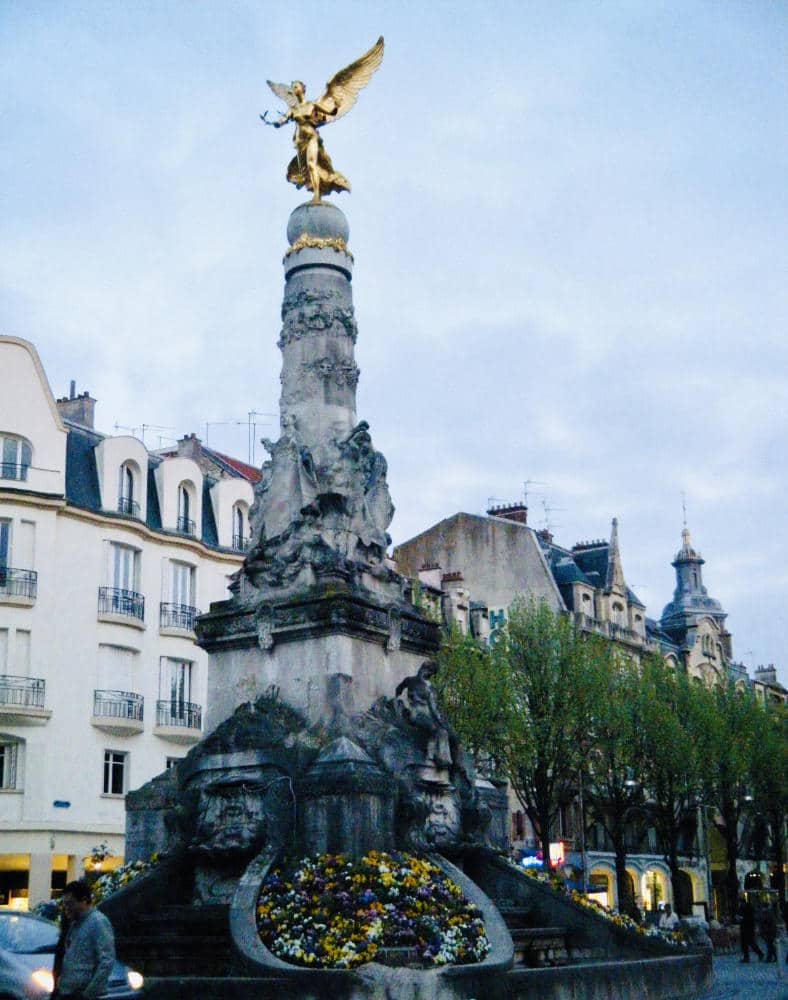The historic city of Reims was at one time one of the most important cities in France. It is famous for its rich royal history, stunning architecture, and, of course, its association with Champagne.
Reims (pronounced “ra-nces” with nasally “n”) is a city located in the department of Marne in the Grand-Est region in northeastern region of France.
As one of the oldest cities in France, Reims was founded by the Gauls, and then expanded under the Roman conquest. Later, Reims used to be the traditional site of the coronations of French Royalty, and was known as “City of Kings”.
Later, its importance stemmed from its proximity to the region of Champagne. It is on the northern edge of the world-famous Champagne wine region, with many of the renowned champagne houses having their head offices in the city. Some of the most famous champagne houses in Reims include Moet & Chandon, Veuve Clicquot, and Taittinger.
Visitors to Reims can enjoy a variety of sights and activities, including visiting historic churches and cathedrals, touring champagne houses, and exploring the city’s charming streets and squares. So let’s explore the top things to see and do in Reims, shall we? Allons-y!
History
Found by the Gauls before the time of the Roman Empire, it was the place where Clovis I, deemed the first King of the Franks, was anointed monarch. Christianity had come to the area, brought by St. Rémi who baptized Clovis here at the end of the 5th century, and after whom the city was named.
It was one of the main flashpoints in French history, especially the 100 Years War with the English in the Middle Ages. Joan of Arc was sent to free the city from the English to allow Charles VII to be crowned king here.
The city survived the upheaval of the French Revolution, but it would not be so lucky during World War I. German soldiers invaded the city, and with French and Allied bombs falling, more than 70% of the city was destroyed.
The city of Reims was considered a “martyr” to the war, one of the most battered cities in France. The rebuilding started as soon as the war ended, thanks to rich American donors like John D. Rockefeller and Andrew Carnegie.
The city was invaded again by the Germans during World War II. The surrender of the German army took place in Reims in a room of a nearby school, today called Roosevelt high school, on May 7th 1945.
Things to do in Reims
1. Cathédrale Notre-Dame de Reims

The Reims Cathedral stands on the spot of an older church that is thought to have been founded by the bishop Nicasius in the early 5th century. It is here in 496AD that St. Rémi is believed to have baptized Clovis I, the 1st King of the Franks into Christianity.
Like other cathedrals in France and churches from that era, construction of the current building of Reims Cathedral began in the 13th century. After Clovis, most of the French Monarchs through the centuries were crowned here.
Only a handful were not, including Napoleon Bonaparte who decided to be crowned at Notre Dame de Paris. His successor Louis XVIII also tried to dispense with the tradition, after the guillotine of his uncle King Louis XVI and Marie Antoinette.
The last coronation here was 1825 of Charles X, who was quite unpopular and shortly overthrown after. The Reims Cathedral was one of the buildings substantially destroyed during World War I, which had to be almost entirely rebuilt. A large donation from John D. Rockefeller was able to restore the Cathedral to what we see today.
When you walk through the cathedral, you can’t help but remark upon the extraordinary history of this tourist attraction. All around the exterior and interior facades, there are giant size statues of kings and saints.
The building today is an inspiration for the reconstruction of Notre Dame de Paris which was also significantly damaged after a large fire in 2019. It is officially recognized on the UNESCO world heritage list.
2. Visit Champagne distilleries
The big attraction in Champagne is of course the world-famous houses of champagne. Only sparkling wines that are from the region of Champagne are allowed to be called “Champagne AOC“.
☞ READ MORE: Easy Guide to the French Wines
The allure of the name comes from a monk named Dom Perignon in the 17th century, who came up with the idea of matching grapes together to make his sparkling wine (as opposed to putting random grapes together). This elevated the brand to what it is today, even though there are other sparkling wines across France that are older.

With varieties of champagnes from dry to rosé, champagnes blanc-de-blanc, etc. a champagne tasting is a must. There are several champagne houses in the region that offer guided tours of the distilleries and vineyards, which you can read about here.

3. Palais du Tau
Just across from the Reims Cathedral is the Palais du Tau, the former residence of the Bishops of Reims. It also has served as a place for royalty to host banquets, including the ones just after the coronation.
You can visit the palace, which today is a museum housing many tapestries, statues and most impressively a treasury with several gold and gold plated religious artifacts.

4. La Porte de Mars
Dating back to the 3rd century is a Gallo-Roman “Arc de Triomphe” dedicated to Mars, the Roman God of War. It is the only surviving arch of the four monumental arches erected at, what was then, the walls to the city.

5. The Town
Reims has a charming city center, with many small shops and wine stores selling all sorts of liquors and champagnes. Visit the local market at Halles du Boulingrin in art-deco style and then make your way to Place Royale in its neoclassical style that honors King Louis XV.
You can also visit Bibliothèque Carnegie, the library donated by American philanthropist Andrew Carnegie who donated it after WWI.
How to get to Reims?
You can get to Reims on a high-speed TGV train from Paris in about 45 minutes. The train arrives directly in town from where you can walk to all the major attractions. However, if you want to visit the champagne vineyards, you will need a car.
It takes about 1hr20 by car to get to Reims from Paris, so it is quite possible to do it as a day trip. You can also take a tour from Paris that will organize the sightseeing and the visit to the champagne houses for you. You can book a champagne tour from Paris here.
How many days should you spend?
If you have the time, I would recommend spending at least 1 night in Reims. This way you can spend some time enjoying the night-time atmosphere of the city (with perhaps a bottle of champagne?)
When is the best time to visit?
Champagne is usually harvested in September, so that is a great time to visit Reims if you want to imbibe in the newest bottles of the year.
In addition, Reims is also known for its festival of Joan of Arc, called the Fêtes johanniques which is held in the start of June in Reims. During the festival, the town is filled with medieval events and markets at the Saint-Remi Basilica and Notre-Dame Cathedral.
Where should you stay?
I recommend staying in the center of Reims, in easy walking distance to the main sights:
- €€€ – The Originals City, Hôtel Le Bristol
- €€€€ – La Caserne Chanzy Hotel & Spa, Autograph Collection

So are you planning to visit Reims in the near future? If you enjoyed that article, you may want to read my article for more day trip ideas from Paris here. Bon voyage and à bientôt!


